JD Fratzke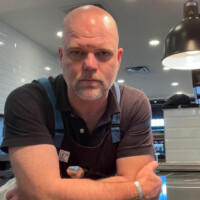
JD Fratzke is a fourth-generation Minnesotan and has been an award-winning hospitality professional for over three decades. In addition to his leadership roles in establishments such as Chino Latino, The Strip Club Meat & Fish, and Falls Landing, JD has contributed to the culinary programs for over dozen establishments in greater Minnesota and appeared as a judge and mentor in season sixteen of Bravo TV’s reality show Top Chef. In 2020, JD began providing services as a hospitality consultant, concept designer and private event chef. In May of 2023, JD joined the team at Daly and DeRoma Foodservice Reps as their corporate chef and has earned Level One MAFSI M-Chef certification.
An avid outdoorsman and wilderness advocate, JD’s writing has appeared in the Saint Paul Pioneer Press, Minneapolis/Saint Paul Magazine, The Growler, Southwest Connector, and the anthology Under Purple Skies (Belt Publishing 2019). In August of 2024, JD launched Liquid North Publishing, LLC and printed his first collection of poetry, River Language. He currently has two more titles in the works to be released in Spring and Autumn of 2025. JD Fratzke lives in Minneapolis with his wife and daughter.
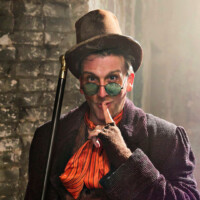
Bradley Greenwald
Bradley Greenwald is a singer, actor, writer, and director. For over 30 years he has performed with almost every theater, dance company, and music ensemble in the Twin Cities. He adapted Madeleine L’Engle’s novel A Wrinkle in Time into a libretto for Libby Larsen’s opera and wrote the book and lyrics for C. (adaptation of Cyrano de Bergerac) and Johnny Skeeky, or The Remedy for Everything, (adaptation of the Puccini comedy, with Steven Epp), both produced by Theater Latté Da. Bradley has curated and written narratives for innovative spoken word/music concerts for Open Eye Theater, Music Saint Croix, St. Cloud Symphony, Oratorio Society of Minnesota, and Mendelssohn Choir of Pittsburgh. He is the recipient of a Minnesota State Arts Board Fellowship in music, the McKnight Fellowship for Theater Artists, and the Ivey Award. Bradley is co-coordinator of MacPhail’s Prelude: Singer-Actor Lab for high school students.
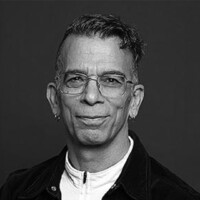
Ali Heshmati, AIA
Ali Heshmati, AIA, is a founding partner at Laboratory for Environments, Architecture, and Design (LEADinc), a collaborative interdisciplinary firm with studios in USA and Norway, and is a senior architect at Henning Larsen, based in Norway. LEADinc, pronounced like “led,” is a progressive design laboratory whose guiding principle is the idea that creative architecture is rooted in the process of research, discovery, and critique of existing conventions. Consistent with LEADinc’s vision, Ali’s practice, teaching, research, and writing focuses on the role of building methods, technologies, materials, and natural and built environments in the formation of design objects. Through his work, he explores the effects of building activity on the natural and built environments.
Ali received his professional degree with the highest distinction from the College of Architecture and Landscape Architecture at the University of Minnesota. As an architect with more than 24 years experience in architecture, public art, and fine arts, Ali has worked on numerous large-scale award-winning projects. His architectural work during the last two decades has focused on cultural and public arenas. Ali has taught as an adjunct assistant professor at the Department of Architecture of the University of Minnesota since 1996. In 2002 he joined Fabric Architecture magazine as a contributing editor.
Since the late 80s and with a background in fine arts, he has been exploring the juncture between art and architecture. The consideration of human body and culture in the public theater, and architecture as the stage for this theater, has been the focal point of Ali’s professional and collaborative work. Ali Heshmati has received numerous awards of excellence, grants, scholarships, and fellowships for his design work.
In his LSDR talk, “Let There Be Light: Architecture, Light, Physiology, and Health,” Ali will be speaking about his research on the impact of available daylight on brain’s regulation of the circadian system and why that is important for architects, focusing on why empathy matters in design process; how can program and context inspire design; how one formulates a design concept or strategy; why the human factor is most important; why architects and designers play a more important role in public health than medical professionals; how should we moderate the time we spend indoors; and why it is time for a paradigm shift in architecture to connect us to rather than separating us from nature
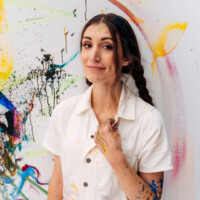
Sarah Kraning
Sarah Kraning is a visual artist and synesthete who transforms sound into vibrant, dynamic paintings. Her work bridges the gap between music and visual art, offering a glimpse into the unseen world of synesthesia. Through live performances, she paints in real-time to music, translating sound into color, texture, and motion.
Sarah has collaborated with renowned musicians, including BOB MOSES and Armani White, and her paintings have been collected by artists such as James Hunt of RÜFÜS DU SOL and Kevin Jonas. With a dedicated online audience, she shares her creative process, engaging people in the intersection of music, art, and perception.
Passionate about climate advocacy, Sarah is developing a performance series that merges live painting with soundscapes of nature, raising awareness and funds for environmental causes. Her work not only visualizes music but also fosters a deeper emotional connection between art, nature, and human experience. Follow Sarah’s work at sarahkraning.com and on social media: @sarahkraningon all major platforms.
In her LSDR presentation, visual artist and synesthete Sarah explores the intersection of music, art, and design through the lens of synesthesia. Sarah shares how she translates sound into color and movement in her work, offering a unique perspective on cross-sensory creativity. Through personal stories and insights into her process, Sarah demonstrates how embracing one’s authentic perception of the world can lead to groundbreaking artistic and design innovations.
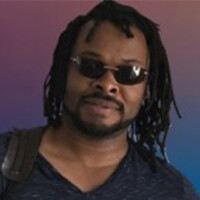
Ray Mattison
Ray Mattison‘s career spans two decades in vehicle design, having worked on private jet interiors, snowmobiles, off-road competition Jeeps, and Advance Aerial Mobility projects. Ray has led Design Eye Q, a transportation design studio in downtown Duluth. In the next chapter of his professional life, Ray is looking at how electrification and autonomy can allow aviation to deliver compelling experiences while leaving behind a smaller carbon footprint.
In Ray’s talk, let’s explore the transformative future of mobility, focusing on how Design Eye Q combines deep-rooted expertise with cutting-edge technologies to shape tomorrow’s transportation solutions. From autonomous systems and micro-mobility to Zoox and eVTOLs, we’ll discuss how new tools like AI and VR are revolutionizing design and testing processes. Despite the surge in digital tools, we remain grounded in the proven value of hands-on build-and-test methods, creating a harmonious balance between tradition and innovation. Join us to see how we prepare the world for what’s next in mobility.
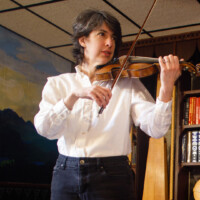 Kate McWilliams
Kate McWilliams
Kate McWilliams is an artist and historian who builds medieval musical instruments. These instruments—rebecs, vielles, citoles, and others—are precursors to the modern violin and guitar. Assimilating information from medieval artwork, the few surviving instruments, and feedback from modern performers, she works to imagine what they were like. She has built close to 100 instruments in her wood-working shop in Shoreview, selling them to performers and universities worldwide.
Imagine assembling a 500-piece jigsaw puzzle when all you have is the box and a handful of pieces—and only some of which are from the original puzzle! That is what Kate feels like when she begins the creative process of building a medieval musical instrument, and she loves it. Kate builds long-lost stringed instruments popular 600 to 900 years ago. These instruments—rebecs, vielles, and citoles—are predecessors to the modern violin and guitar, and represent the fashions and priorities of a bygone era. Part of the challenge that Kate finds so alluring is finding, assessing, and using disparate clues to create viable, living instruments.
In her LSDR presentation, “Imagination and the Art of Recreating a Forgotten Craft,” Kate will share some of her instruments and the decisions she made to design them. She will discuss the informative value of her puzzle pieces: iconography, texts, and surviving instruments. Among these are the British Museum citole, a spectacularly carved instrument dating from around 1315. She will also discuss what she learns after building the instrument: how the presence of viable recreations informs the sensibilities of modern players and audiences.
As a craftswoman of medieval instruments, Kate’s fundamental attitude is one of respect. Master medieval craftsmen were capable of creating products requiring sophistication of skill equal to monuments of any age since. From the lofty Gothic cathedral to the intimate illuminated manuscript, they excelled in their craft. Survivals such as the British Museum citole testify that such pinnacles of workmanship occurred in musical instruments as well. With these as models, Kate has no upper limit to the scope of her work.

